of Robert Weinberg
In the summer of 2001, DarkTales Publications published Bob's first collection of short stories, Dial Your Dreams, in trade paperback. The book contained fifteen of Bob's short stories and novelets, about half the number of short stories he's written. Here are the titles of the stories that appeared in that collection along with Bob's comments on each particular story.
I've written well over a million words of fiction but only a small percentage of that is in
 short form. That's because I find writing novels a lot easier than writing short stories.
I've always admired authors who dash off a short story in a few hours one afternoon. For me, writing a short story takes days, sometimes weeks of concentration. Novels are big and give a writer lots of room to explore ideas. Short stories need to be concise and make a point in a few thousand words. As I've said more than once, I can't write my name and address in less than a thousand words. A lot of blood, sweat, and agony went into these stories.
short form. That's because I find writing novels a lot easier than writing short stories.
I've always admired authors who dash off a short story in a few hours one afternoon. For me, writing a short story takes days, sometimes weeks of concentration. Novels are big and give a writer lots of room to explore ideas. Short stories need to be concise and make a point in a few thousand words. As I've said more than once, I can't write my name and address in less than a thousand words. A lot of blood, sweat, and agony went into these stories.
"Dial Your Dreams" was first published in Voices from the Night in 1994. "Dial Your Dreams" was written during a time when 900 phone lines were all the rage. There were hundreds of phone sex services as well as dial-a -psychic numbers (which are unfortunately still with us). Listening one night to a TV commercial for one of the psychic hot-lines, the entire concept for this story, including the ending, popped into my mind. To me, the concept seems still seems quite logical and very very possible.
"Ro Erg" was published in 1995 in Dark Love. The origin of "Ro Erg" is described in the story itself. For nearly five years, I received innumerable letters addressed to Mr. Ro Erg offering me credit cards with outrageous credit limits. As stated by T.E.D. Klein in the introduction to Dark Love where "Ro Erg" first appeared, anyone who thinks the story is about sex is terribly misguided.
"Endure the Night" was first published in Phobias in 1994. Richard Gilliam was kind enough some years ago to invite me to write a story for his anthology,
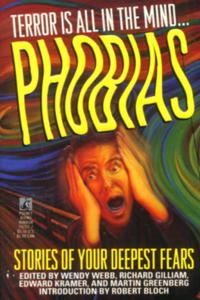 Phobias. The only requirement was that every author write a story about a different phobia. I wanted to write about fear of flying, but that subject had already been taken. I settled on fear of the dark. "Endure the Night" was the result. The story has been optioned twice for filming but has never been produced. It has been done several times as a dramatic script reading. Being entirely without modesty, I think it would make an effective movie.
Phobias. The only requirement was that every author write a story about a different phobia. I wanted to write about fear of flying, but that subject had already been taken. I settled on fear of the dark. "Endure the Night" was the result. The story has been optioned twice for filming but has never been produced. It has been done several times as a dramatic script reading. Being entirely without modesty, I think it would make an effective movie.
"Three Steps Back" was written for Richard for a follow-up volume to his PHOBIAS anthology. A dispute between co-editors resulted in it not being printed. Much of the story is true and based on my own experiences in graduate school. Again, this was a story that wrote itself, with me merely adding a few dramatic moments to several horrifying moments.
"The Midnight El" first appeared in 1994 in Return to the Twilight Zone. Marty Greenberg invited me to submit a story to Return to the Twilight Zone. "The Midnight El" was my attempt to write a story in the "Twilight Zone" style. I must have succeeded in some small way, as the story has been reprinted several times. The story was also written as a tribute to Robert Bloch, whose own train story, "That Hellbound Train," was always one of my personal favorite short stories.
"Terror by Night" was first published in in 1991 in Chilled to the Bone. I sold my first short story in 1967. A few more sales and I decided that I
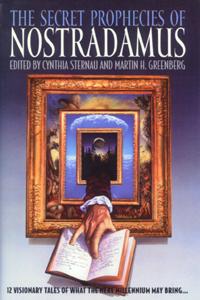 would starve to death as an author. I wrote no more fiction till 1986 when I decided to try writing horror novels. I sold three before I turned to short stories again in 1991, twenty-four years after my first fiction sale. "Terror By Night" was written for Bob Garcia's anthology, Chilled to the Bone. It's not as polished as I would like, but it had been a long time between stories.
would starve to death as an author. I wrote no more fiction till 1986 when I decided to try writing horror novels. I sold three before I turned to short stories again in 1991, twenty-four years after my first fiction sale. "Terror By Night" was written for Bob Garcia's anthology, Chilled to the Bone. It's not as polished as I would like, but it had been a long time between stories.
"The Apocalypse Quatrain" was published in The Secret Prophecies of Nostradamus in 1995. "The Apocalypse Quatrain" was another story written for Marty Greenberg. Like most projects based on a specific subject, once I decided on the basic premise for the story, it only took a few days to write.
"Seven Drops of Blood" is copyright © 1993 by Robert Weinberg. It was first published in Grails: Quests, Visitations & Other Occurances. "Seven Drops of Blood" features the only encounter between characters from my novels, The Devil's Auction and The Black Lodge. It also gave me a chance to use some esoteric bits of occult lore in an unusual fashion.
"The Silent Majority" was first published in 1993 in The Ultimate Zombie. I've always been a fan of slapstick comedy. The sillier the better. "The Silent Majority" enable me to write a slapstick horror story. I wish I could write more.
"Unfinished Business" was first published in Tales of Riverworld in 1992. It's sequel, "Riverworld Roulette" was published in 1993 in
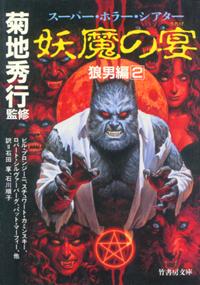 Quest for Riverworld. I consider the Riverworld novels of Philip Jose Farmer among the finest works of imaginative fiction. Being allowed to write "Unfinished Business" and "Riverworld Roulette" set in the Riverworld Universe was a tremendous pleasure. They also gave me a chance to feature some of the most memorable characters in American history, Jim Bowie and Davy Crockett.
Quest for Riverworld. I consider the Riverworld novels of Philip Jose Farmer among the finest works of imaginative fiction. Being allowed to write "Unfinished Business" and "Riverworld Roulette" set in the Riverworld Universe was a tremendous pleasure. They also gave me a chance to feature some of the most memorable characters in American history, Jim Bowie and Davy Crockett.
"Wolf Watch" appeared in 1991 in The Ultimate Werewolf. "Wolf Watch" was my second short story after returning to fiction. I wanted to write something different than the usual werewolf story. Driving by a K-Mart store late one night, the basic concept instantly materialized in my mind. Writing the story took only a day once the direction was set.
"Chant" copyright © 1998, 2001 by Robert Weinberg. It appears for the first time in Dial Your Dreams & Other Nightmares. "Chant" is another TV commercial story. It was inspired by innumerable sales pitches for albums featuring Gregorian chants. Originally slated for a collection of Cthulhu mythos stories that was never published, I'm happy to see it in print finally.
"Elevator Girls" was first published in The Many Faces of Fantasy, the 1996 World Fantasy Convention Program Book. The novelet is based on
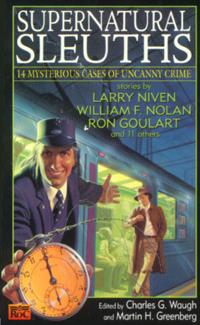 fact, though a few dates have been changed to protect the seemingly innocent. Joe R. Lansdale was kind enough for me to use him under a thinly disguised name in the story. As to the identity of the other characters in the story, I'll never tell.
fact, though a few dates have been changed to protect the seemingly innocent. Joe R. Lansdale was kind enough for me to use him under a thinly disguised name in the story. As to the identity of the other characters in the story, I'll never tell.
About a year ago, Bob was asked to write a short article on his first professional sale. The article never appeared and the magazine it was written for seems to have folded. Here then are his comments on "My First Sale."
I knew I wanted to be a writer as soon as I read Stephen Vincent Benet's story, "The Devil and Daniel Webster" in 5th Grade of Elementary School. While I loved the Benet story, I thought I had an ending that beat his cold. I must admit that with more than a forty year gap, I don't remember exactly what that ending was, but I'm sure it involved much sword-fighting, some heroic rescues, and perhaps even Tarzan. I doubt Mr. Benet had much to worry about my efforts, but he must bear in some part the blame or praise of my written efforts since.
School in the 1950's and early 1960's, during the midst of what was later became known as the "baby boom" was a lot different than it is today. There were no specialized classes such as
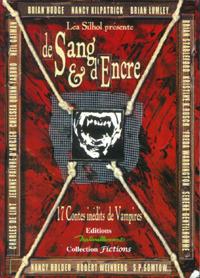 "Creative Writing" or "Asian Studies." Subjects were plain and to the point. From 7th grade on, you took English, Math (or Algebra, Geometry, Trigonometry, Calculus), Geography, History, etc.. Homework was daily and grading was tough. I received a fine education, one that served me well throughout my life.
"Creative Writing" or "Asian Studies." Subjects were plain and to the point. From 7th grade on, you took English, Math (or Algebra, Geometry, Trigonometry, Calculus), Geography, History, etc.. Homework was daily and grading was tough. I received a fine education, one that served me well throughout my life.
I started writing when I was eleven years old. My first published fiction was in my grade-school newspaper when I was thirteen. By the time I was sixteen, I was regularly submitting stories to the science fiction magazines of the time - Analog, Galaxy, IF, Fantastic, and Fantasy & Science Fiction. I wrote constantly, typing on an old Smith Corona typewriter that weighed forty lbs. And required hitting the keys with enough force to play a Wagnerian opera.
I believed then, as I still believe now, that if you were determined to follow a dream and willing to devote the time, effort, and sweat to it, that dream would come true. I loved writing and refused to let disappointments and disasters sway me from my course. From 1962 through 1967, I received over a hundred rejection slips from all the SF magazines, as well as from a number of paperback publishers who I submitted novel length manuscripts. I saved every one of those rejection slips and thumb-tacked them to the wall of my bedroom. Not as a wall of sorrow or despair, but as a constant reminder to keep on trying.
My story, "Destroyer," was written in fall of 1966. It was submitted to IF magazine early in
 1967, as I was attending college at the time and didn't have as much time as I once did to send in material. I didn't hear anything about it for several months. Then, to my shock and surprise, I received a letter from Lester Del Rey. He was editing a new fantasy magazine from the same publisher as IF and Galaxy and somehow the story had reached his desk. He liked it very much and would have bought it, but since it was addressed to IF, had passed it along to Fred Pohl, the editor of that magazine who was also interested in it. A day later I received a letter from Fred Pohl, asking to buy the story. Not only had a finally sold a story, but I had written one that two editors liked! It was one of the high points of my writing career.
1967, as I was attending college at the time and didn't have as much time as I once did to send in material. I didn't hear anything about it for several months. Then, to my shock and surprise, I received a letter from Lester Del Rey. He was editing a new fantasy magazine from the same publisher as IF and Galaxy and somehow the story had reached his desk. He liked it very much and would have bought it, but since it was addressed to IF, had passed it along to Fred Pohl, the editor of that magazine who was also interested in it. A day later I received a letter from Fred Pohl, asking to buy the story. Not only had a finally sold a story, but I had written one that two editors liked! It was one of the high points of my writing career.
Unfortunately, IF had a tremendous backlog of stories, so "Destroyer" was not published until two years later, in 1969. By then, I had
discovered that the real money in writing was in non-fiction and while I occasionally wrote an SF short, I was busily writing articles for tabloid newspapers. I sold three more short stories to magazines that all folded or went through major editorial changes, so I saw none of them published. I was a graduate student in Mathematics, working on my Ph.D., and while I
 still loved fiction, non-fiction paid the bills and kept me from starving. So, reluctantly, I abandoned the fiction field and set out to conquer the real world.
still loved fiction, non-fiction paid the bills and kept me from starving. So, reluctantly, I abandoned the fiction field and set out to conquer the real world.
It wasn't until fifteen years later, when I was financially secure that the bug struck again. In 1986, I decided it was time to return to fiction. My tastes had changed over the years and now I was writing horror instead of fantasy or science fiction. But the desire burned as brightly as ever. I sold my first novel in 1988 and have sold fourteen more since then, along with more than two dozen short stories and several non-fiction books. I'm pretty much a full-time writer now, authoring a monthly comic book title for Marvel (Cable, one of the X-Men titles), and keeping busy with both fiction and non-fiction projects. It's been an exciting and rewarding adventure, filled with highs and lows. Writing is a solitary, lonely business that requires great determination and tremendous drive. It also requires a pretty thick skin. But, it's a career unlike any other and the rewards far outweigh the negatives. I still believe that if you're willing to work hard learning your craft, and dedicated to writing, no matter how long and how hard it might take, that you'll succeed. Good luck. Keep trying!
Bob continues to write short fiction and and occasional article for books and magazines. He devotes most of his time to writing books, but if an interesting project comes along, he still finds it hard to resist contributing to an anthology or collection of essays.
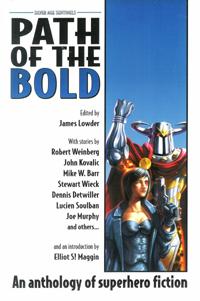
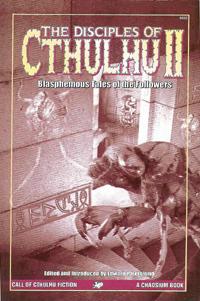
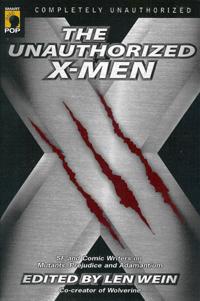
"Enter, the Eradicator!" in Path of the Bold, edited by James Lowder. This story features Sydney Taine, the heroine of Bob's limited edition comic book series, "Nightside" in a rather unusual comic book story (without pictures). Since reprinted in The Occult Detective.
"Passing Through" in The Disciples of Cthulhu II edited by E.P. Berglund -- one of Bob's very few contributions to the Cthulhu mythos. A sequel of sorts to "The Dreams in the Witch House" by H.P. Lovecraft.
"Cable's Grandfather" in The Unauthorized X-Men edited by Len Wein - an article on how Bob came to write "Cable" for Marvel Comics.
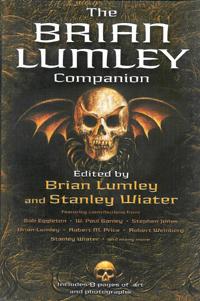
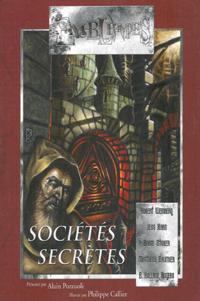
"The Children of May" (in French) in Secret Societies edited by Alain Pozzuoli - A Sid Taine story, originally written for a collection of Excalibur stories, but that wasn't used and thus appeared here first, in French. Since reprinted in The Occult Detective.
The Occult Detective is a trade paperbound book published by Twilight Tales and contains all of the Sidney and Sydney Taine short stories published through 2006. It was published to celebrate Bob's appearance as a Guest of Honor at the 2005 World Fantasy Convention. Worth buying if for no other reason than the great photo of Bob on the cover!
Also, don't miss the following:
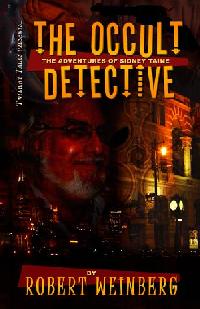
Available from |
NEW KOLCHAK PROSE STORIES
KOLCHAK:
Available Oct 2005 Featuring new stories by Max Allan Collins, Stuart Kaminsky, Bob Weinberg and many other fine writers. Over 320 pages for only $18.95.
|
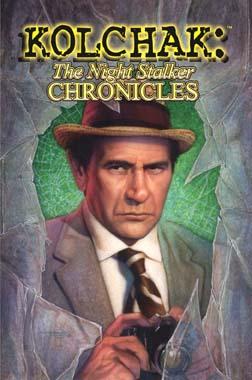
|
Bob continues to dabble in short stories, writing one or two whenever an interesting theme anthology appears. Early in 2007, Moonstone Books assembled a collection of entirely new adventure stories featuring the Spider. The stories had to take place in the 1930s and 1940s and remain true to the series characters and concepts. Bob's story was titled "The Devil's Druggist."
Included is the first chapter of the four-chapter story for your reading enjoyment. Pick up the book to read the rest of the stories as well as work by Will Murray and John Jakes. It's a fun book, highly recommended!
The Devil's Druggist by Robert Weinberg
"Extra! Extra!" the newsboy's voice rang out like a siren. "Read all about it. Another victim killed by poison aspirin! Getcha' papers here! Read all about it!"
"I'll takeone of those, son," said Richard Wentworth, grabbing a paper off thejust-delivered stack and handing the news urchin a quarter. "Keep the change."
"Wow! A twenty-cent tip!" the kid exclaimed. "Thanks, mister!"
Wentworth grinned at the boy's enthusiasm, but the smile disappeared as soon as he read the tabloid's lead headline.
"ASPIRIN CLAIMS TENTH VICTIM!" blared the forty-point type plastered across the front page of the newspaper's early evening edition. Beneath the bold words was the picture of a young man, a college student, spread eagle on the floor of the City
College cafeteria. Both of the victim's hands were stretched over his head, his fingers curled like claws, tearing at the air around him. His face was contorted in agony, his eyes popped wide open in death. On the floor nearby was a bottle of Bayside aspirin, a half-dozen white tablets spread about like bullets. Bullets in the shape of life-saving medication! Here was another victim of the aspirin killer.
Walking in ground-eating strides down Fifty-Fourth Street towards the East River, Wentworth scanned the inside pages of the news rag for the crime details. The death followed the same pattern as all the rest. Ten people had died during the past week and the police were baffled by not only the crimes but how they had been committed. Wentworth could sympathize. These crimes made no sense. The victims were young and old, men and women, rich and poor. As far as the police could tell, they shared nothing in common. Their killer made no demands and left no clues to his methods. The only thing linking the crimes was that each victim had died after taking aspirin. And, making matters worse, they hadn't even all ingested the same brand!
Police chemists were baffled. None of the other tablets in the aspirin bottles contained any traces of poison. Evidently, the master criminal placed the deadly tablets right at the top of the containers, so that they were the first ones used after the bottle top was opened. It seemed impossible but there was no other explanation that made sense.
The murders were outrageous, seemingly random, totally illogical, and yet they kept on happening.
The young man's name was Tom Robbins. Along with a group of friends, he had stayed up late the night before finishing a report due for social studies. At lunch, he'd complained of a headache from lack of sleep. No one had thought anything of him opening a small bottle of Bayside aspirin and taking two pills with a glass of milk. It wasn't until a few minutes later, when Tom had lurched up from his chair, his face twisted in terrible pain, his arms thrashing about wildly, did someone remember the warnings about aspirin. By then, it was too late, much too late.
Tom was from Philadelphia, and from all reports had been well liked and admired on campus. He kept away from illegal booze and had too little cash to gamble. Not the type to get involved with gangsters or thugs. None of his friends could think of anyone in the world who would want to harm their classmate. Yet, he was dead.
The next few paragraphs of the news story summarized the circumstances of the earlier killings. First to die had been a retired judge, leading the police to think maybe it was a mob rubout. Until the second killing had taken place, that of a junior nurse in a children's hospital. Then there had been the deaths of an elderly matron, an airplane pilot, a shoe salesman, and all the rest. Every one of them dead with their throats constricted as if being choked, unable to breath, having taken two aspirin.
There had been raids on pharmacies and midnight questioning of druggists in a wild attempt to locate a possible madman, all without results. The president of Bayside Drugs had posted a ten thousand dollar reward leading to the capture of the culprit, leading nowhere. People switched from the popular aspirin brands to lesser-known companies. But the killings continued.
The story concluded with a statement that the police were pursuing several "hot" leads and that Commissioner Stanley Kilpatrick expected a break in the case shortly. In the meantime, he advised people with headaches to put cold compresses on their foreheads and at all cost avoid taking aspirin.
Wentworth grimaced in annoyance and tossed the newspaper into a nearby trash can. Hot leads indeed! He had talked to his friend, Kirkpatrick, earlier that afternoon about the murders and the Commissioner had admitted that the police were baffled. All of the Bayside employees in the city had checked out and not a trace of poison had been found at the local bottling plant. So far, the aspirin killer had not left a single clue.
Entering the lobby of his Sutton Place apartment building, Wentworth punched the button for the penthouse. Once in the apartment, he headed directly for the music lounge and the case holding his priceless Stradivarius violin. A few quick warm up trills, and he was ready to play. Letting his emotions run wild, Wentworth launched into a passionate rendition of "Danse Macabre."
So caught up was he in the music that he didn't notice five minutes later when the door of the penthouse swung open and a lithe, attractive young woman with short brown hair glided in. She stared for a moment at Wentworth, in a near hypnotic trance as he played, and then with a slight shrug of her shoulders, dropped down to the plush cushions of the parlor sofa. Wealthy young woman of the world and Wentworth's soul mate, Nita van Sloan, she was used to waiting.
Five minutes more passed until Wentworth, his anger and annoyance gone, put down the violin. He smiled at the sight of Nita sitting patiently in the other room. "Nita," he said, stepping out of the music lounge and into the parlor, "you should have interrupted."
"Nonsense, Dick," she answered smiling. "I know how much you value your time with your violin. Besides," she laughed, "it's the one female whose competition I don't mind."
"As if I could love anyone but you," said Wentworth. Walking to the bar in the corner, he fixed each of them a drink. As he handed one to Nita, the phone rang.
"Excuse me, my love," said Wentworth, reaching for the receiver. "Maybe it's Ram Singh or Jackson calling. I sent them upstate to do some investigating. I was hoping to hear from them by evening."
Wentworth picked up the phone and listened intently. His features hardened, his eyes narrowed. His fingers holding the receiver turned white. "Yes,I'll tell her, Kirk. We'll be right there. I promise."
"Dick?" said Nita, rising to her feet, alarmed. "Was that Kirkpatrick? What's wrong?"
"It was Kirk all right," said Wentworth. His body was electric with tension, as if ready to explode. "He was calling from Lilly Hapshaw's apartment. Kirk thought he might find you here."
"Lily?" repeated Nita. She and Lillian Hapshaw had been roommates at Vassar and had remained close friends ever since. She clasped her hands in front of her face as tears filled her eyes. "You don't mean---"
"I'm sorry, Nita," said Wentworth, "but Lily's been found dead on the floor of her apartment, yet another victim of the aspirin killer. Kirk wants us to rush right over and take a look around. He's hoping that you, as one of Lily's closest friends, might spot something out of the ordinary. Are you up for it?'
For a second, a mask of tears blurred Nita's beautiful features. Then, as if switching from one emotion to another, her face hardened and turned into a steely mask of resolve. No tears for anyone from this version of Nita van Sloan. This was the dark side of Nita that only Dick Wentworth and a few other companions knew existed.
She leaned forward and stared Wentworth directly in the eyes. Her voice never rose above that of a whisper. "I went to Vassar with Lily Hapshaw, Dick. She was a friend of mine. As sweet and pleasant a girl as you can imagine. I can't understand who would want to kill her, and I don't care why. What I do know, is that I want that person to die. To die like Lily, gasping desperately for air. Is that understood? There should be no mercy for Lily's killer. None at all."
"As you wish, so shall it be," murmured Wentworth, his mouth close to one of her ears. Not a trusting man, he knew the range of modern listening devices. He kept his conversations short and to the point. "The Spider guarantees it."
Nita, along with Wentworth's assistants Ram Singh and Jackson, were the only people who knew that wealthy man-about-town and amateur sleuth, Dick Wentworth was also the Spider, Masterof Men. It was in this alternate identity that Wentworth dealt out permanent bullet-justice to those fiends who might otherwise escape the long hand of the law. A ruthless vigilante feared by the Underworld, hunted by the police, the Spider acted as judge, jury and executioner in regards to those who broke the law. The most dangerous man alive, when the Spider promised no mercy, he meant it.
Together, the two hurried down to the huge underground garage beneath the apartment building. "I sent Jackson and Ram to upstate New York to check out the companies supplying the chemicals used to make aspirin in the city. So far, they've found nothing unusual. They won't be back until tomorrow. So tonight it's just you and me hunting for this crazy aspirin killer."
Wentworth slammed on the gas pedal of the huge Daimler, sending it spinning onto late afternoon Manhattan Streets. Next stop, the apartment of Nita's college chum, Lily Hapshaw.
Read the rest of this story in THE SPIDER trade paperback, published by Moonstone Books earlier this year!
* * * * *
Horrors Beyond II Some Mysteries Should Not Be Disturbed! Uncanny contraptions, weird devices, technologies beyond the control of humanity abound in the universe. Sometimes there are things that resist discovery. When science pushes the boundaries of understanding, terrible things push back. Often knowledge comes at a great cost. 21 unsettling tales of dark fiction are gathered in this volume, exploring the horrors beyond our reality. Mad science, terrifying creatures, dangerous discoveries, stretched across a landscape of time and space. Explore the secrets hidden within the folds of the world unseen. Featuring stories by William C. Dietz, A.A. Attanasio, John Shirley, Richard A. Lupoff, Robert Weinberg, Paul S. Kemp, Jay Caselberg, Stephen Mark Rainey, Gene O'Neill, Alexis Glynn Latner, E. Sedia, David Niall Wilson, Lucien Soulban, Paul Melniczek, Tim Curran, C.J. Henderson, Greg Beatty, Michail Velichansky, Ron Shiflet, John Sunseri, William Jones, and of course, Robert Weinberg. Due out this summer. Bob has a long 10,000 word Lovecraftian horror story, "The Margins," in this book. First apperance anywhere! 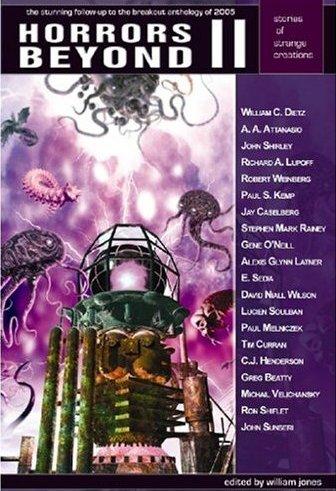
Return to the Main Page.